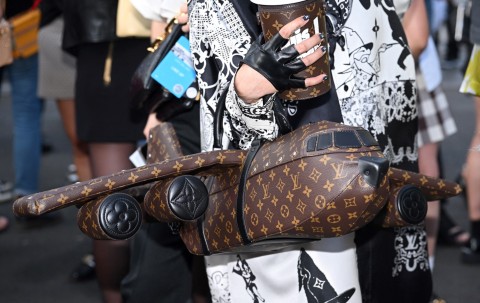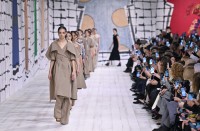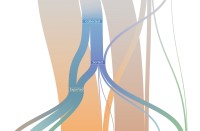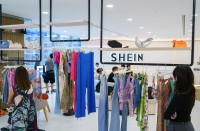
By Nathalie OLOF-ORS
MENDRISIO, Switzerland, Nov 5, 2023 (AFP) – The zip on a luxury handbag is more than just a detail: it can be one of the best ways to tell whether it’s the real deal or a cheap copy.
The zips found on the handbags of major brands are often made by Switzerland’s Riri, which was bought by Swiss group Oerlikon in March.
Based in Mendrisio in the Alpine country’s southern, Italian-speaking Ticino region, Riri makes snap fasteners and zips for major French and Italian leather goods and haute couture houses.
They work with the brand stylists’ designs, such as colourful teeth that form a pattern, or pull tabs and sliders that look like jewellery. They are then manufactured in small batches of 60 or more.
“For these quantities our competitors in Asia don’t even start their machines,” said Renato Usoni, president of Oerlikon’s luxury division, which was created during the takeover.
In a market that Usoni has estimated to be worth three-and-a-half to four billion euros ($3.75 to $4.3 billion), prices vary from two euros per zip to 20,000 euros for a gold one — with the average price around 50 times higher than in Asia.
“If you paid thousands of euros for a handbag or a pair of boots, the zipper must be perfect,” said Usoni, who managed Riri until the Oerlikon takeover.
Its zips are machine-tested at length to check their resilience and ensure that the logos and monograms do not fade with wear.
Riri’s origins date back to 1923 when the Swiss businessman Martin Othmar Winterhalter purchased a zip patent from the Swedish-American engineer Gideon Sundback and opened a factory in Germany.
Faced with the rise of Nazism, in 1936 the Jewish businessman decided to load his machines onto a train and move them to a former pasta factory in Ticino, where he launched the Riri brand, Usoni said.
Given the high production costs in Switzerland, the company gradually shifted its focus to luxury.
– Industrial language –
More recently, Riri sought to expand into physical vapour deposition (PVD) technology, a process of coating metals to protect against corrosion, which is one of Oerlikon’s specialties.
PVD coating is used in aeronautics, cars and industrial tools and Oerlikon was trying to offer the technology to luxury brands — though not without difficulties.
Markus Tacke, chief executive at Oerlikon surface solutions, said they were speaking in completely different languages.
“In luxury, you talk colours, how it feels when you touch,” he told AFP.
“In industry, you talk hardness, abrasiveness. So it’s different terms.”
To break into the luxury sector, in 2021 Oerlikon bought the French company Coeurdor, which makes clasps, rings and belt buckles, and then bought Riri in March 2023.
Once allied with these companies which are used to interpreting designers’ sketches, the combination “helped us to find the right language to explain what we’re doing, and suddenly the projects were moving”, said Tacke.
Founded in 1906, Oerlikon is a pillar of Swiss industry and diversifying into luxury should provide it with a more stable income stream, with many of its activities highly sensitive to the economic climate.
Its division specialising in equipment for textile machines is currently suffering from consumption falling with inflation.
During the Covid-19 pandemic, its coatings were hit by shocks in the aeronautics and automobile industries.
“In that sense, it is plausible to invest in something that reduces those revenue swings,” said Yannik Ryf, an analyst at Zurich Cantonal Bank.
However, the luxury sector “is still a small part of Oerlikon’s overall business”, he told AFP.
In the first half of 2023, sales at the newly created luxury division amounted to 83 million Swiss francs, only 5.7 percent of its turnover.
Oligarch Viktor Vekselberg, a close associate of Russian President Vladimir Putin, bought a stake in Oerlikon in 2006 and now holds 42.7 percent through an investment company, raising eyebrows on the stock market since the war in Ukraine began last year.
Oerlikon saw its orders decline by 25.8 percent in the third quarter of 2023 compared to the same period last year, to 567 million Swiss francs.
Its turnover fell by 15.9 percent to 623 million Swiss francs on the same comparison, the group announced Thursday.








